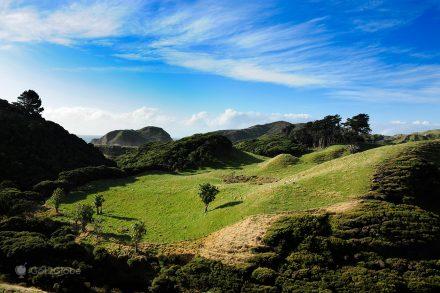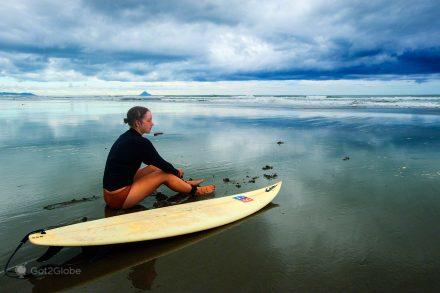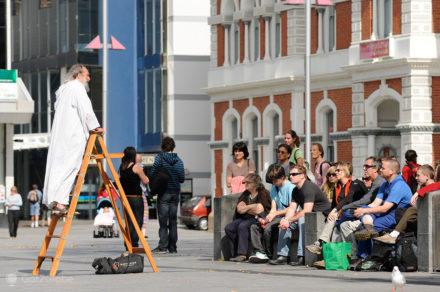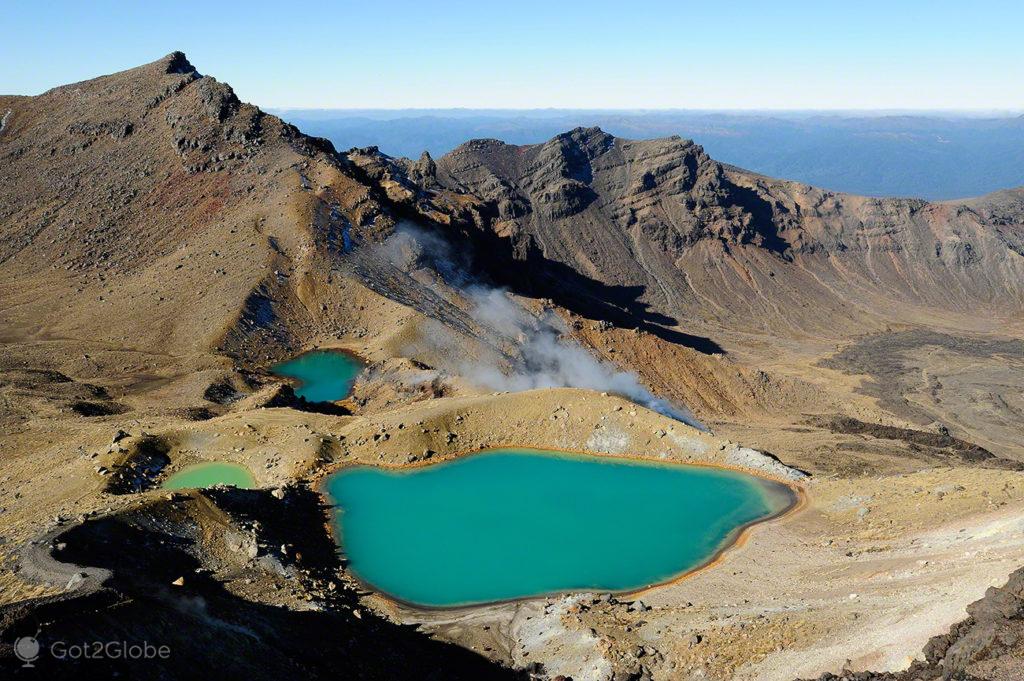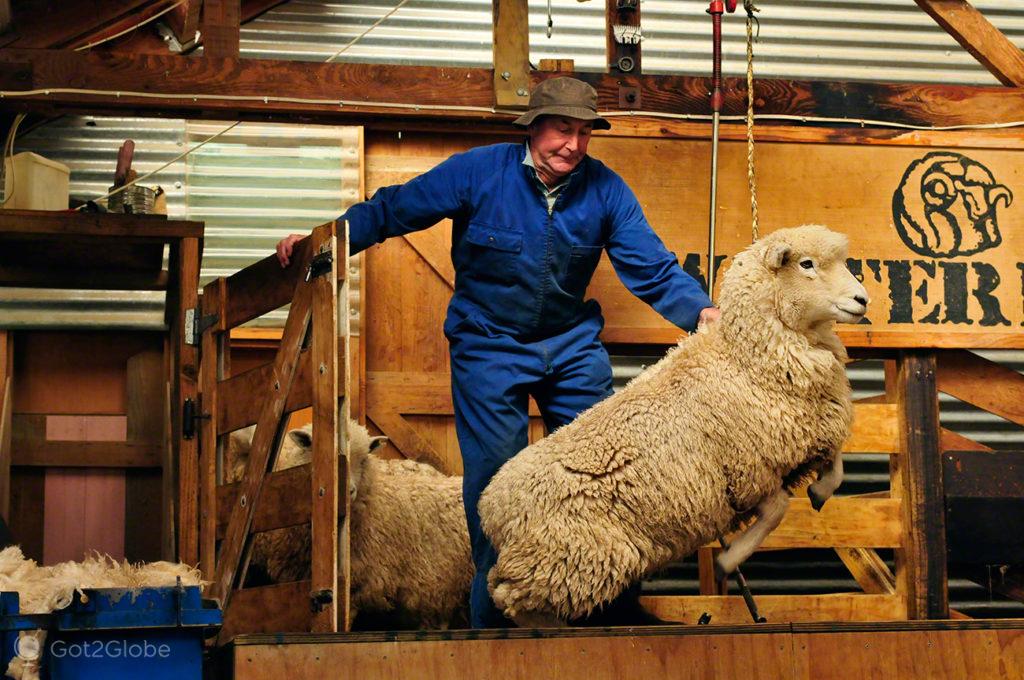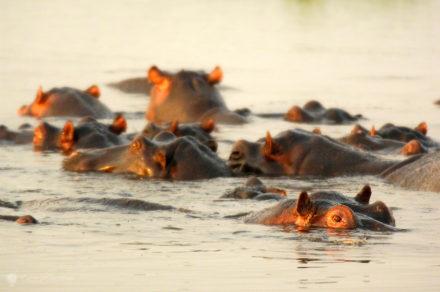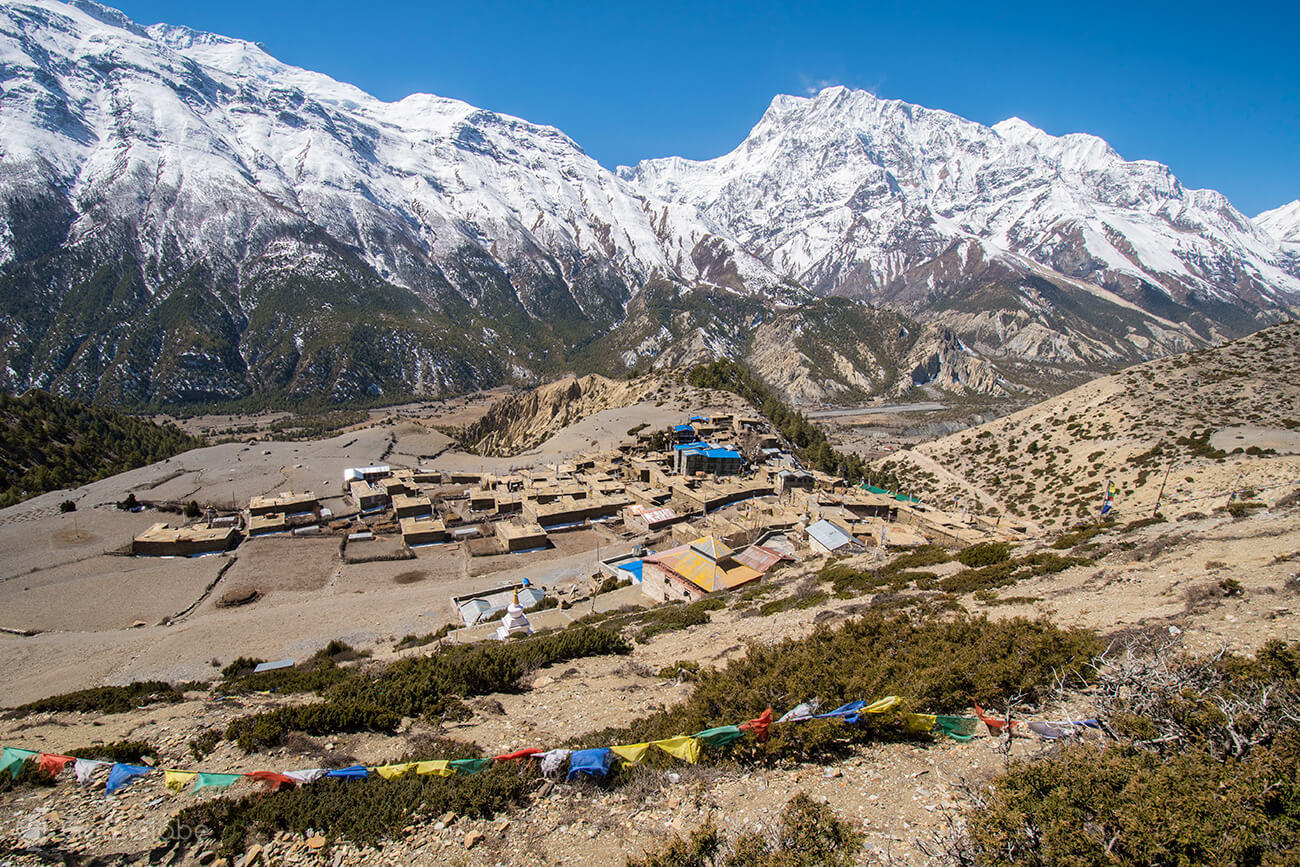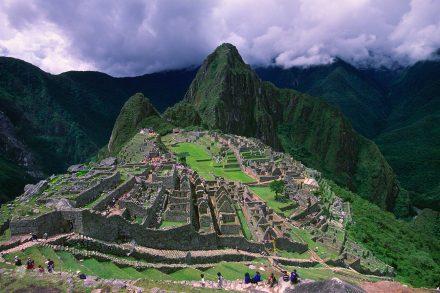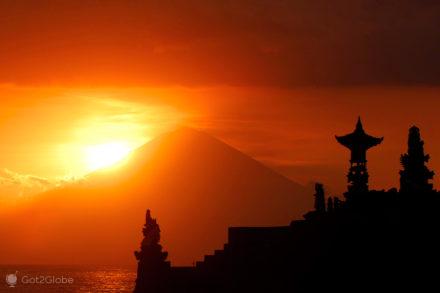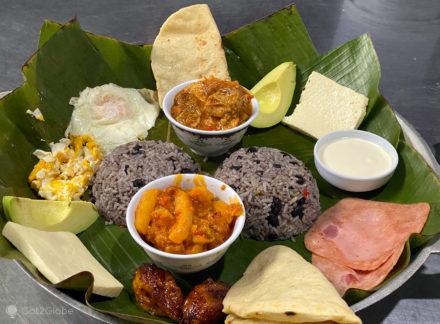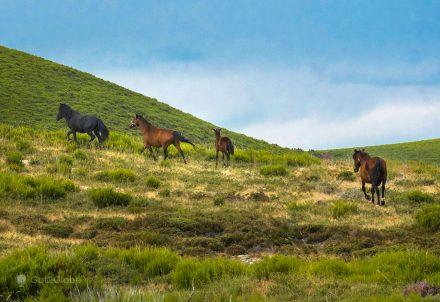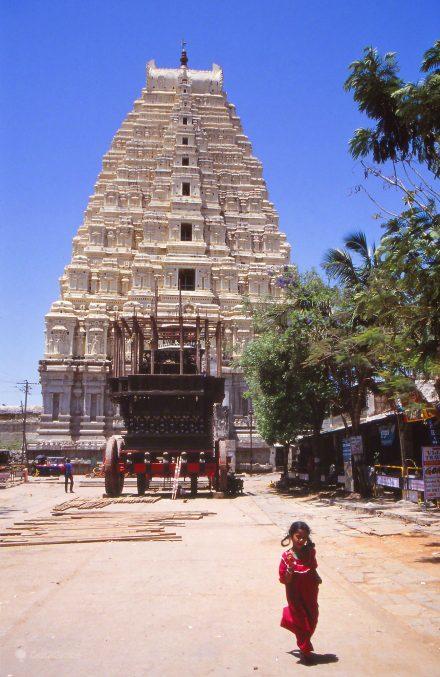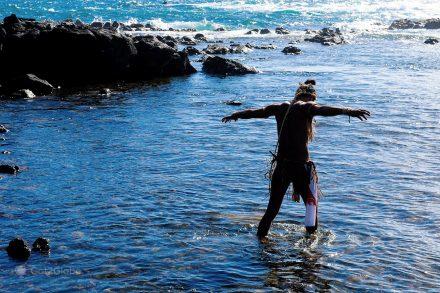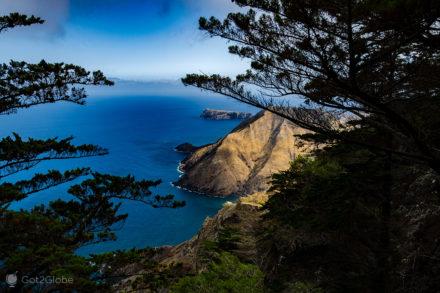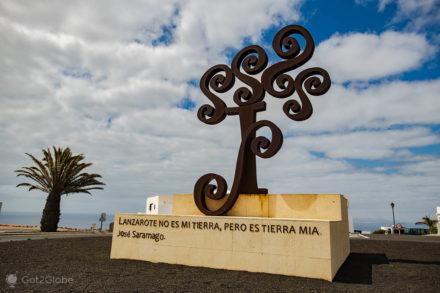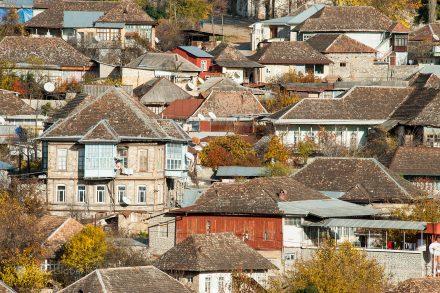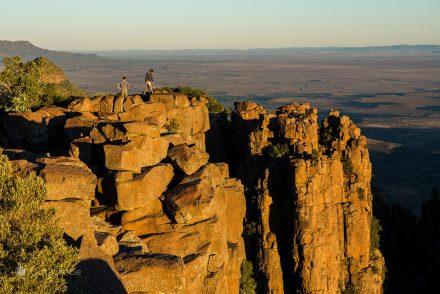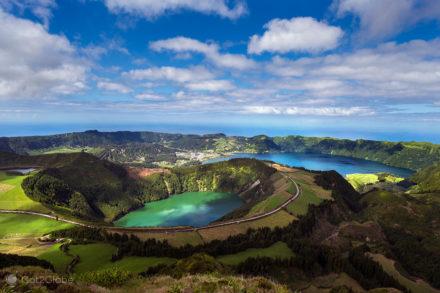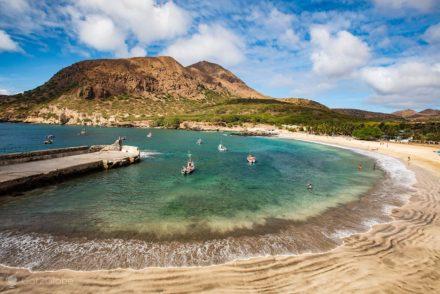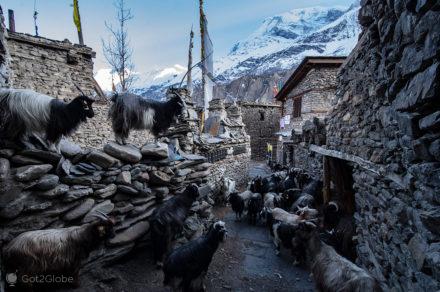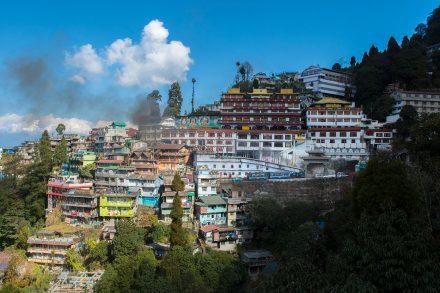Whatever the itinerary, the discovery of the New Zealand sounds has a mandatory start in Te Anau, where hikers stock up on supplies and the last resort equipment, so often necessary because they are not prepared for the capricious local weather.
The authorities Kiwi locals called it Te Anau Milford Highway.
As we traveled across the southern island, we got used to the ecological minimalism of these basic routes. And half an hour on the way is enough for us to confirm how her humility contrasted with the imposing scenery of the surrounding scenery.
We start by winding, going up and down through hills left behind by the glacial moraine that excavated Lake Te Anau, almost to 500 meters deep.
Onwards, we enter a dark and dense forest of beech trees that alternates with alluvial plains and gentle meadows yellowed by the tightening cold and which we see materialized in shades of white on the top of the mountains that close the Eglinton Valley and on the soaring summits of the Pyramid Peak and the Ngatimamoe Peak.
More often than we expected, we parked the car and went out for promising hikes, like the one in the Mirror Lakes where, over a bridge, we admire the more-than-perfect reflections of the surrounding mountains.
Around Km77, we find the area known by the natives as O Tapara, Cascade Creek for the settlers.
This is where the Maori detachments met and rested on their way to Anita Bay, where they prospected the stone they called pounamu (nephritis) and that, despite being considered semi-precious today, they considered the most valuable and sacred.
The Divide's Litical Division
Seven kilometers and many waterfalls fed by snow thaws later, we reach the rock wall of The Divide, the eastern-lower western passage of the Southern Alps. The Divide marks a geological as well as a climatic separation.

Section of the road that connects Te Anau to the entrance to Milford Sound.
Without us expecting it, a thick, slow-motion snow begins to fall, which rescues our visibility and forces us to take a clumsy ride.
If there are places on Earth where it rains and – in the coldest months – it snows heavily, Fiordland is one of them. Certain areas have an average annual rainfall of almost 7 meters, spread over about 180 days.
On some of these days 250 mm of rain or snow or snow and rain can fall, a dynamic combination that, propelled by the strong wind, bewilders and puts even the most experienced hikers in affliction, at the mercy of the treacherous heights of the 480 km of trails in the region.
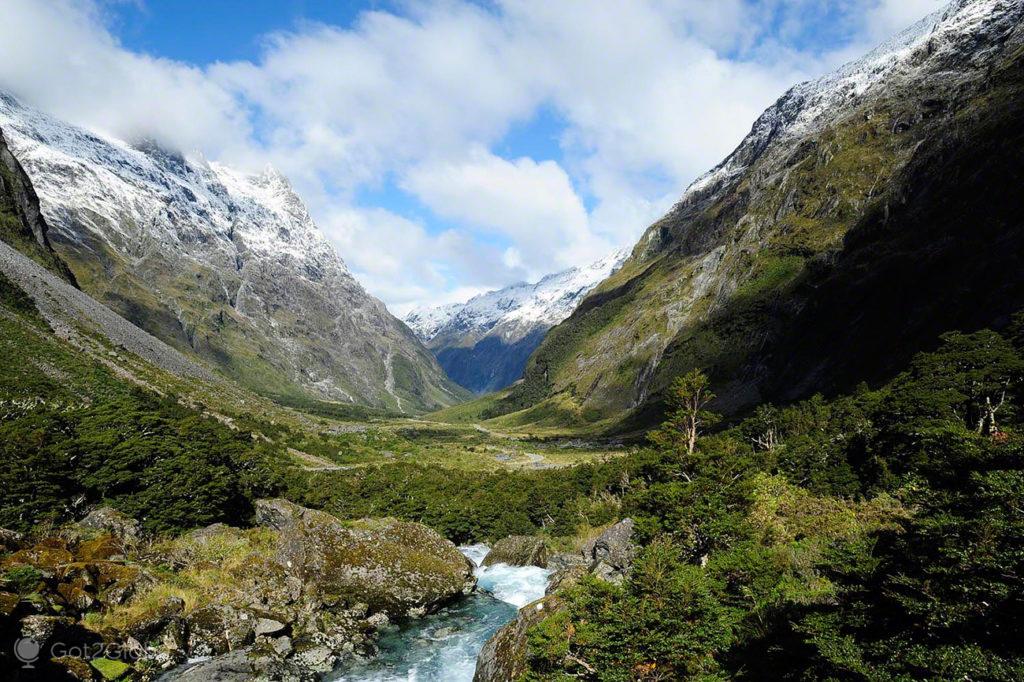
River runs through a valley in Fiordland National Park.
Even inside the car shelter, we felt psychological discomfort and impotence in the face of that rough landscape and the inclement nature of the elements that sculpted it. The storm does not linger. After half an hour, the setting is given a rewarding lull that restores the sharpness of raw antiquity.
A Panorama Little or Nothing Changed by the Millennium
In visual terms, but not only, Fiordland remains part of the prehistoric era. Many of its animals and plants are endemic and have evolved little since then: o takahe, a species of goose thought to be extinct 50 years ago, the kakapo, the heaviest parrot in the world, the ok, a cheeky relative (and the only alpine parrot) that we found soaked in a viewpoint and, who knows why, that insists on biting our shoes.
Geologically speaking, Fiordland's landscape has been crisscrossed by intense glacial erosion and by the tectonic activity that affected the islands of New Zealand during their long post-Gondwana drift across the Pacific Ocean.
While the movement of the plates continues to raise the cliffs and mountains to the order of 1.3 cm per year, the flooding climate takes care of the final decorative touches, with a clear focus on the more vivid shades of green.
As more and more inhospitable kilometers pass, the scenarios confirm themselves filled with a chaotic assortment of bushes that give way to specific streams. They are also covered with carpets of moss and resplendent ferns, with green or brown trunks, some stiff, others fallen and rotten but always full of lichens.

Moss-covered forest on the edge of Te Anau – Milford Sound Highway.
Passage through The Chasm and the Majestic Vision of Milford Sound
We detected this composition in full, just 10km from Milford Sound and the Tasman Sea, around The Chasm where the Cleddau River crashes between gigantic polished boulders and disappears to the bottom of a tight abyss, all enjoyed over a bridge of wood overlooking Mount Tutoko, the highest peak in Fiordland.

Waterfall flows abundantly above the Chasm in Fiordland National Park.
The first sighting of Milford Sound dazzles us double. All of a sudden, the rebellious rivers give way to a long, meandering inlet of the Tasman Sea. From the edges of its dark blue bed, huge almost vertical rocky cliffs are projected, covered in a vertical forest green.
We board one of the ships that reveals this last kiwi frontier and, under the cover of the icy wind, we approach the supreme domain of Miter Peak (1692m).

Snowy Peak stands out above Te Anau – Milford Sound Highway.
Rain Waterfalls, Ice Waterfalls
The waterfalls form white threads that stand out and succeed in dimensions and volumes regulated by the melting of continental lands and by rainfall.
Some are permanent. This is the case of the Stirling Falls, with a rich and dancing flow that gives us and the other passengers on the deck a rejuvenating shower.

Ferry comes as close as possible to Stirling Falls, one of several Milford Sound waterfalls.
The vessel follows its course in calm waters. Until the fjord opens, reveals the immensity of the Tasman Sea and submits to the discomfort of the strong swell. We explored a small stretch of the maritime slopes of this sound, we saw colonies of seals and some penguins.

Sea lions at the sea end of Milford Sound.
Meanwhile, the boat reverses gear and returns to the protection of the mouth for the happiness of the most vulnerable passengers, who were already starting to feel seasick.
The Colonial History of the Evasive Sounds
The sailors at the service of the first discoverers to go offshore, among which the Dutchman Abel Tasman – who gave his name to the surrounding sea – hardly suffered from this condition. Strangely enough, they admired the same views but missed or ignored the narrow entrances that hid navigable canals and gave advanced access to the interior.
In 1773, one of these most famous sailors, named James Cook, was returning from an epic journey across the Southern Ocean in search of the great southern continent when he detected a substantial indentation in the mountains.
More cautious than curious, he chose not to explore it for fear that the wind accelerated by the tight gorge would prevent the vessel from returning to open sea. Inspired by this distrust, he named it the name that the neighboring Milford fjord continues to bear: Doubtful (doubtful or suspicious).

Jagged canyon of Milford Sound, just miles from the Tasman Sea.
Cook was to anchor the Resolution further south at Pickersgill Harbour, a natural refuge from another huge fjord, the Dusky Sound.
The difficulty in colonizing these wild and inhospitable lands has continued over the centuries, such that Fiordland is the region of New Zealand with the least population: only 2000 of its 4,1 million inhabitants live here.
On the other hand, when descriptions of the purity and beauty of these scenarios began to reach the four corners of the planet, new explorers began to flow.

New Zealand's nautical flag waving from the stern of a ferry across the Milford Sound.
Donald Sutherland: The Pioneer Who Became a Host
It all started when Donald Sutherland, a soldier, adventurer, seal hunter, gold prospector and who knows what else, declared upon sighting Milford Sound: "If you ever drop anchor, it will be here."
Twelve years later, in 1878, his wife, Elisabeth, took advantage of the establishment of the first path between Te Anau and Milford and opened an inn to accommodate the asphalters, people from the city who arrived to appreciate the grandeur of the scenarios.
Milford Track. Milford Sound Discovered on Foot
Every year, 400 travelers from all over the world flock to the region, determined to explore it, whatever the cost. Some pay only with cash and are transported full time by land, sea and air. Others also pay with the body. They walk and climb until exhaustion.
The construction of roads in Fiordland has been limited to what is absolutely necessary or perhaps not even that, considering that there is only one. The tramping trails – the New Zealanders' favorite outdoor activity – scan the region without ceremony or shame, covering a total of almost 500 kilometers that wind from sea level to the highest peaks.
One of these trails, the Milford Track, became so popular that Fiordland National Park authorities had to “ration” the annual number of permits granted, to avoid excessive traffic in the warmer months.
With 54 kilometers long, which takes about four days to complete, and a route that leads to the entrance of Milford Sound through forests and waterlogged valleys, the Milford Track is labeled as “easy”.

A lush fern near the Chasm in Fiordland National Park.
Others, as long or longer, go up and down mountains with such steep slopes that they require technical knowledge of climbing.
According to Maori mythology, the fjords were not carved by the icy rivers that once filled all the valleys, but by an ax-wielding god, Tu-te-raki-whanoa, who carved slices on the coast, now punished. by huge waves, to make it habitable.
The urban plan failed completely, but the Maori took the opportunity to discover the region, to fish, hunt and collect a type of jade they called tangiwai.
Certain tribal groups defeated in internal conflicts did, however, settle temporarily, living in seclusion among the seals and penguins – which the European settlers later almost extinguished – until they returned to the interior.

New Zealand's nautical flag waving from the stern of a ferry across the Milford Sound.
Even then, they suffered from the sand flies that infest this part of New Zealand, responsible for the only negative criticism anyone dares to make of the region.
Experts in generating mythology, the Maori created the legend that they were introduced by the Dark goddess, Hine-nui-te-po, to prevent humans from becoming inactive in the face of the dazzling beauty of the landscape. This time, the divine plans did not fail. The only way not to offer them some blood is to stop as little as possible.














